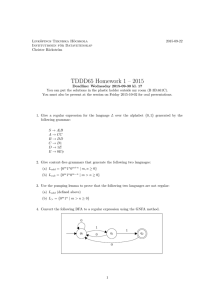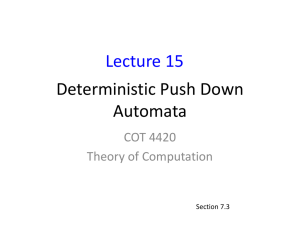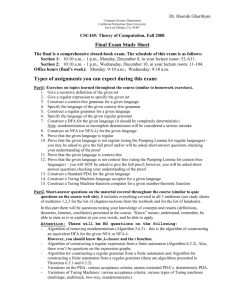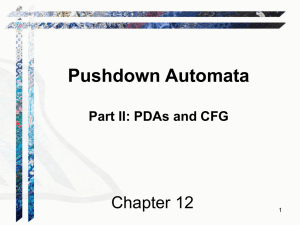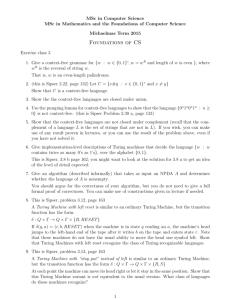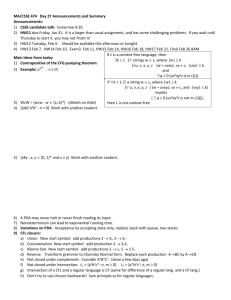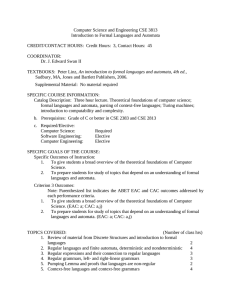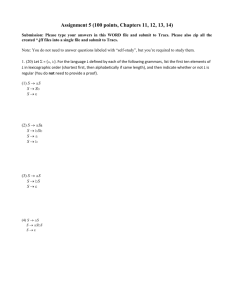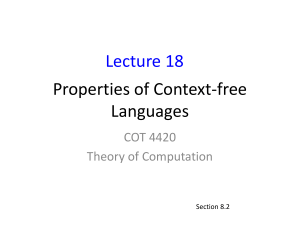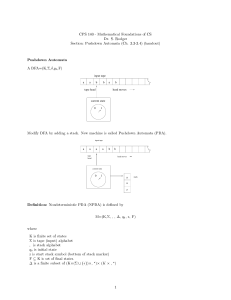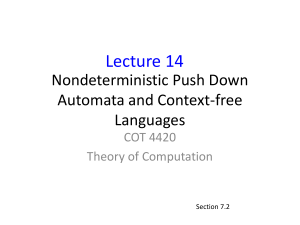COT4420 Theory of Computation March 17, 2016
advertisement
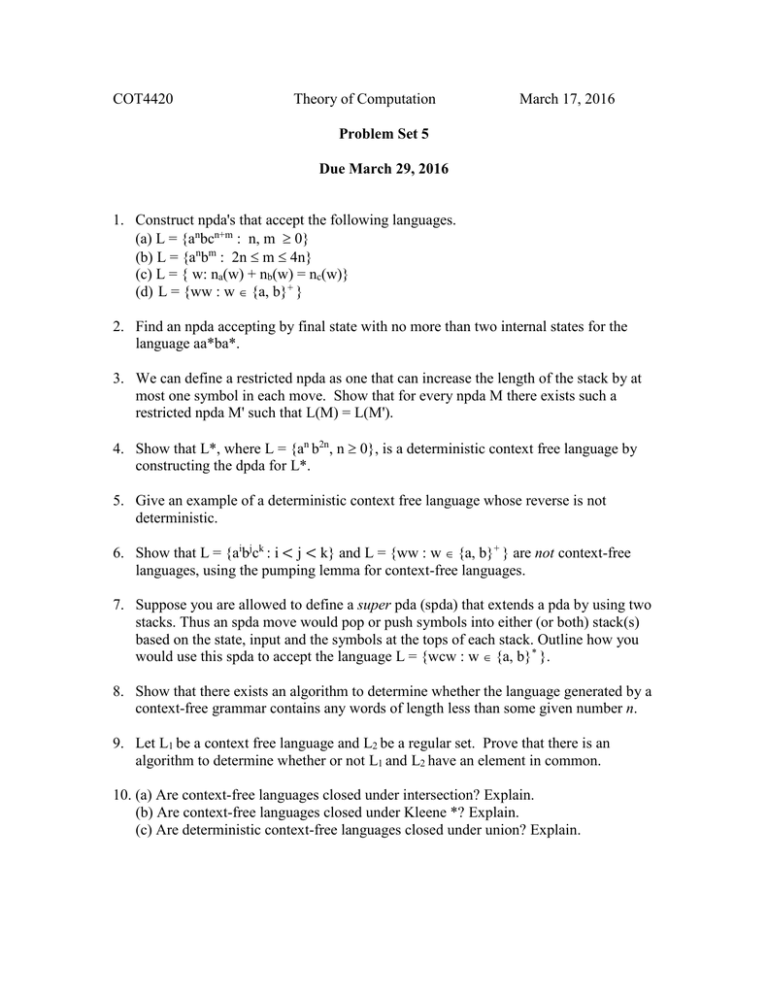
COT4420
Theory of Computation
March 17, 2016
Problem Set 5
Due March 29, 2016
1. Construct npda's that accept the following languages.
(a) L = {anbcn+m : n, m ≥ 0}
(b) L = {anbm : 2n ≤ m ≤ 4n}
(c) L = { w: na(w) + nb(w) = nc(w)}
(d) L = {ww : w ∈ {a, b}+ }
2. Find an npda accepting by final state with no more than two internal states for the
language aa*ba*.
3. We can define a restricted npda as one that can increase the length of the stack by at
most one symbol in each move. Show that for every npda M there exists such a
restricted npda M' such that L(M) = L(M').
4. Show that L*, where L = {an b2n, n ≥ 0}, is a deterministic context free language by
constructing the dpda for L*.
5. Give an example of a deterministic context free language whose reverse is not
deterministic.
6. Show that L = {aibjck : i < j < k} and L = {ww : w ∈ {a, b}+ } are not context-free
languages, using the pumping lemma for context-free languages.
7. Suppose you are allowed to define a super pda (spda) that extends a pda by using two
stacks. Thus an spda move would pop or push symbols into either (or both) stack(s)
based on the state, input and the symbols at the tops of each stack. Outline how you
would use this spda to accept the language L = {wcw : w ∈ {a, b}* }.
8. Show that there exists an algorithm to determine whether the language generated by a
context-free grammar contains any words of length less than some given number n.
9. Let L1 be a context free language and L2 be a regular set. Prove that there is an
algorithm to determine whether or not L1 and L2 have an element in common.
10. (a) Are context-free languages closed under intersection? Explain.
(b) Are context-free languages closed under Kleene *? Explain.
(c) Are deterministic context-free languages closed under union? Explain.
